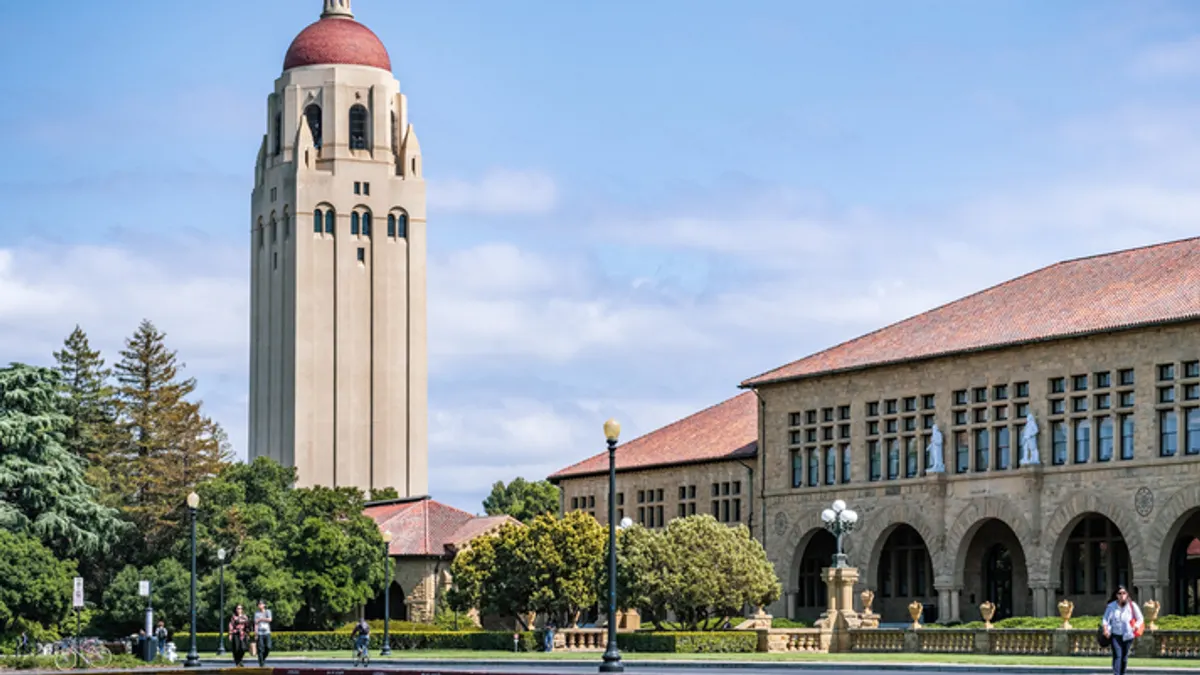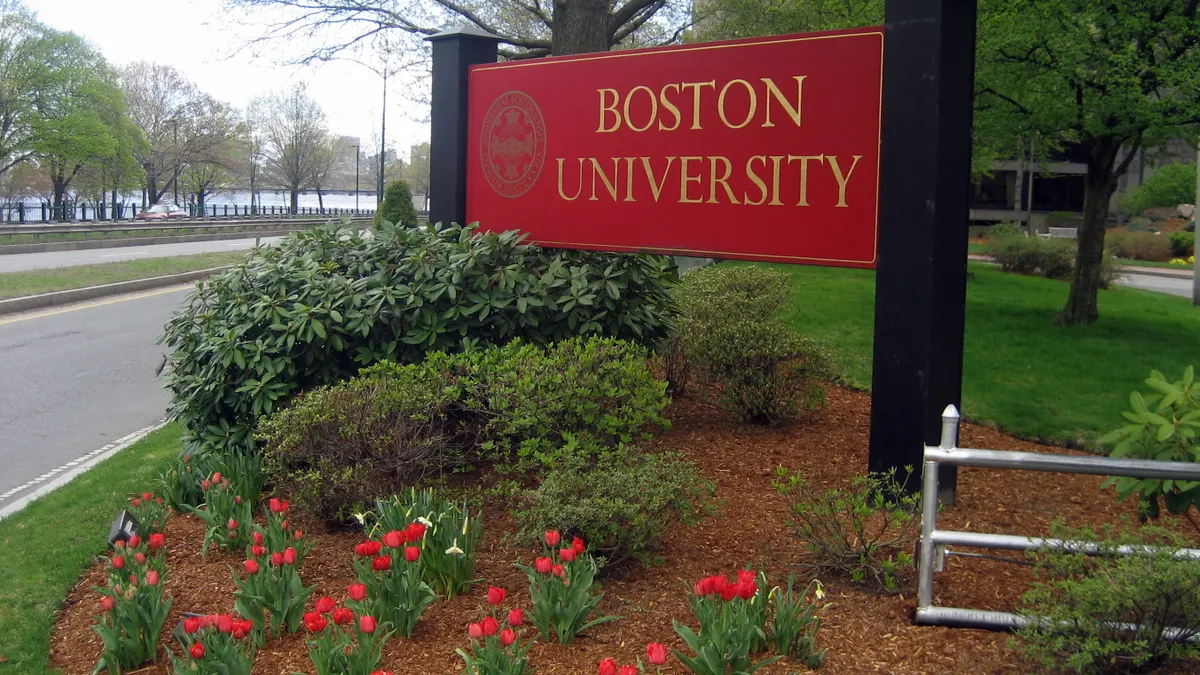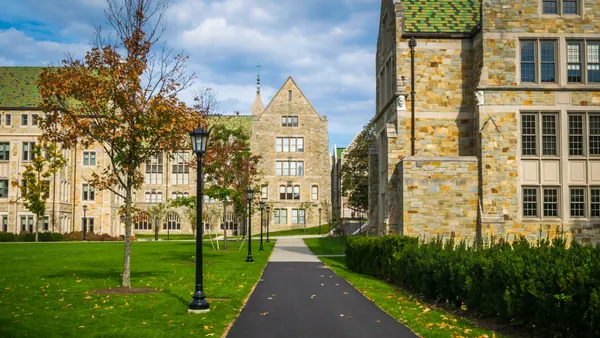Dive Brief:
- Students who graduated high school in 2017 and 2018 saw notable socioeconomic gaps in their college completion rates, according to data released Wednesday by the National Student Clearinghouse Research Center.
- Just a quarter of students who graduated from high-poverty high schools in 2017 and 2018 earned at least an associate’s degree within six years, the center found. Meanwhile, students who graduated from more affluent high schools in 2017 and 2018 more than doubled that six-year completion rate at 59%.
- According to the center, those who graduated from high-poverty schools in 2022 also had the lowest persistence rate (74%) for continuing college between the first and second year when compared across other characteristics such as their high school’s location and minority levels.
Dive Insight:
The data from the 13th annual High School Benchmarks report revealed that these socioeconomic disparities can even emerge shortly after high school graduation.
For instance, the nonprofit research group found that 51% of students from high-poverty schools enrolled in college in the fall after their high school graduation versus 74% of students from low-poverty schools.
“Large differences in college access and degree attainment mean many students don't see the benefits of higher education opportunities, particularly those from low-income backgrounds,” said Doug Shapiro, executive director of the National Student Clearinghouse Research Center, in a Wednesday statement. “Even with stable enrollment outcomes, the socioeconomic gaps continue to persist.”
The findings come as other research this year has indicated that most high schoolers don’t feel prepared to choose a postsecondary pathway after graduation. That includes pursuing a traditional four-year college degree, work or other options, according to a June report from Jobs for the Future, Gallup and the Walton Family Foundation. That same report also found that more than a third of high school students said they’ve never visited a college.
Middle and high schoolers also appear to be increasingly considering alternative postsecondary options besides earning a college degree. A 2024 survey from national nonprofit American Student Assistance found just 45% of students in grades 7-12 said they foresee a two- or four-year college as their most likely next step. That’s a significant drop from 73% in 2018.
At the same time, ASA found that student interest in nondegree education pathways more than tripled from 12% in 2018 to 38% in 2024. Such alternative programs include vocational schools, apprenticeships and technical boot camps.
The cost of college is often perceived as unaffordable, as a majority of U.S. adults believe the cost of getting a college degree is more expensive than it actually is, according to a May report from Strada. That misperception could also be driving some to forego higher education, the report said.
But the reality is that even as the sticker prices of tuition rise at private nonprofit colleges, for instance, more students are still receiving large financial aid packages from these institutions.
















